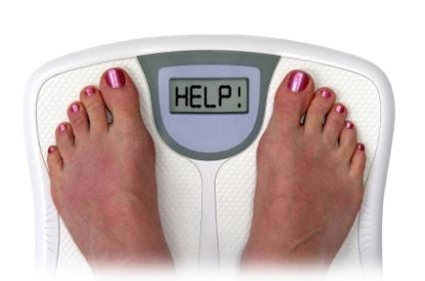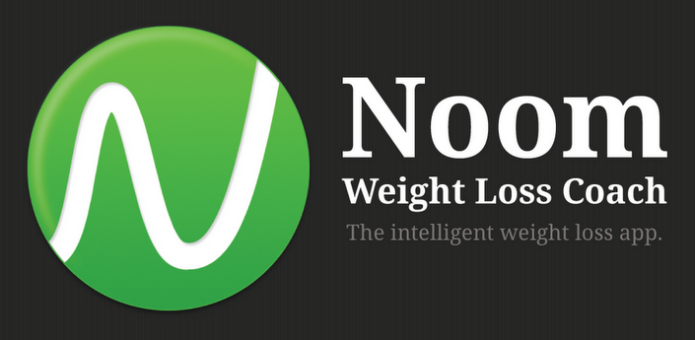The Perfected Self: Technology and the Obesity Epidemic
Recently, I have been trying to catch up on reading that I have been neglecting. And I have also been thinking a lot about developing a weight-loss plan for myself, as winter has gotten the best of me and I have been neglecting my exercise routine and eating many, many carbs. I have been uncomfortable in my body and need a change. Well, the universe seemed to know what I needed when I picked up this article from the Atlantic and began reading: The Perfected Self by David H Freeman.
My younger brother Dan gradually put on weight over a decade, reaching 230 pounds two years ago, at the age of 50. Given his 5-foot-6 frame, that put him 45 pounds above the U.S. National Institutes of Health’s threshold of obesity. Accompanying this dubious milestone were a diagnosis of type 2 diabetes and multiple indicators of creeping heart disease, all of which left him on a regimen of drugs aimed at lowering his newly significant risks of becoming seriously ill and of dying at an unnecessarily early age.
He’d be in good company: a 2007 study by TheJournal of the American Medical Association found that each year, 160,000 Americans die early for reasons related to obesity, accounting for more than one in 20 deaths. The costs are not just bodily. Other studies have found that a person 70 or more pounds overweight racks up extra lifetime medical costs of as much as $30,000, a figure that varies with race and gender. And we seem to be just warming up: cardiologists who have looked at current childhood obesity rates and other health indicators predict a steep rise in heart disease over the next few decades, while a report from the Organization for Economic Cooperation and Development projected that two-thirds of the populations of some industrialized nations will be obese within 10 years.
Today, my brother weighs 165 pounds—what he weighed at age 23—and his doctor has taken him off all his medications. He has his vigor back, and a brisk three-mile walk is a breeze for him.
Sorry if this sounds like a commercial for a miracle weight-loss program. But in fact my brother did it with plain old diet and exercise, by counting calories and walking. He had no surgery, took no supplements or pills, ate no unusual foods, had no dietary restrictions, embarked on no extreme exercise regimen. He will need to work his whole life to keep the weight off, but he shows every sign of being on the right track. He has changed his eating and exercise habits, and insists he enjoys the new ones more than the old.
Wow, huh? The article goes on to explain that according to the National Weight-Control Registry, 98% of people who have lost significant amounts of weight do not manage to keep off a minimum of 30 pounds for at least a year. Following programs such as Weight Watchers or diets such as Atkins often has a short-term positive effect, with people losing weight and keeping it off during the program or diet, but the long-term results are fairly dismal. I saw this working at a weight-loss camp one summer: most of the campers were repeat customers, who would lose a significant amount of weight during the summer, when their portions were being severely controlled and they were being forced to exercise, but during the school year (when no one was monitoring what they ate or how much they exercised), they would put all the weight back on and more. It is a vicious cycle that I am all too familiar with and it is extremely frustrating and debilitating.
So, how did the author’s brother lose all this weight and maintain his weight-loss? Well, by using new technology to construct his own weight-loss regimen. Using an electronic application on his phone–which the author refers to as “behavioral technology,” making a reference to B.F. Skinner and “operant conditioning”–he was able to gradually but permanently alter his negative tendencies in an affordable, accessible way.
The article is extremely fascinating, exploring Skinner’s theories and how these new electronic aids could “change the way we conceive of and administer health care,” and I highly recommend you click on over and delve into it yourself. And, personally, I was inspired to try one of these weight-loss oriented apps and begin my own exploration into “behavioral technology.”
I have a love-hate relationship with technology: I was one of the last people I knew in my teens to get AIM or an email address, I refuse to own a Kindle or an i-Pod, starting and maintaining this blog has been a constant struggle for me, and I absolutely refuse to be a part of Twitter. But, I adore being able to communicate with my friends instantaneously across the globe via email and (sometimes) Facebook, I enjoy being a part of an online community such as WordPress, and I obviously take advantage of online reading such as the brilliant Atlantic. I also can’t get enough of YouTube…I mean, you can never have enough adorable animals or glorious music videos, right?
Getting a Smartphone was also an intense struggle for me. I wasn’t ready to be so over-connected, I had a hard time learning all the intricacies of the device, and I was just generally unprepared to enter that new stage of my life (I still use a portable CD player, ok?). But, once I adjusted, I can’t imagine being without it. The maps and navigation devices have saved my a** more times than I can possibly count, I love being able to receive and respond to emails immediately, and it’s a lovely companion to have on long train or bus rides.
And so, after reading the article and being inspired, I decided to sign up for “Noom“–one of the top weight-loss apps available. “Together, Noom users have lost a total of 25,500,250 lbs…and counting!” Sounds promising, eh? I was excited by what Noom had to offer: personalized tasks designed every day to help you lose weight, automatically tracking your progress with easy tools, and help staying motivated and sticking to your plan.
The set-up was relatively simple: Fill out a profile–username, password, height, weight, etc. Enter in a weight-loss plan: how much weight would you like to lose over what span of time? Then Noom helped me to figure out a calorie budget: “When you eat more calories than your body needs, it saves them as fat. When you eat fewer calories than needed, it’ll use up these calories and burn off fat. Exercise is hard: exercise doesn’t burn as many calories as we think, so it’s hard to create a deficit with it. To burn off all your meals from one day, you’d have to run a half marathon. 1 Cupcake (~400 cal)=Walk 4 miles.” Ouch, reality check. Based on my height and weight, and the amount of weight I wanted to lose, I was assigned a certain number of goal calories per day to consume, that would be amended when I logged exercise. The daily calorie budget I was given was 1200 calories: if I stayed within this budget, Noom told me, I could lose weight without intense exercise.
Next, I learned how to log meals. There are endless food categories, and portion sizes are measured in cups or softballs. As an example, I logged my lunch that day: a mixed green salad with walnuts, balsamic vinegar, and “half a matchbook” worth of cheese. “You consumed 300 calories” Noom calculated. Your lunch=66% green, 33% yellow, 0% red. Ideal=50% green, 35%=yellow, and 15%=red. So, I did better than the “ideal”? Great!
Now, what does this stoplight of colors mean exactly? Well, green are foods that “make you feel full without a lot of calories–these should make up a majority of your diet. Focus on eating fruits, veggies, whole grains, non-fat dairy, and legumes.” Yellow are foods that “aren’t necessarily ‘bad for you’ but often have more calories than you think. Eat foods like white grains, packaged snacks, low-fat dairy, and nuts in moderation.” And finally, the nefarious red: “Noom doesn’t believe in cutting food out completely, but red foods should be treated as an indulgence. From cake to KFC, you should enjoy only occasionally.” I appreciate that Noom, I really do. Because living in a society where food is a social exchange, where red foods are at every party and get-together and restaurant, it is difficult to avoid these and not desire them occasionally. So, thanks for being realistic about that.
Noom features a built-in pedometer that somehow magically “counts steps all day without draining the battery.” It gives you a goal amount of steps and congratulates you when you go over that goal. It also has a GPS tracker so, when I later took a 9 mile bike ride, it was able to follow my route and determine the amount of calories I burned. This was a bit creepy (I’m not so much a fan of the idea of my technology knowing where I am at all times) but extremely helpful….and disappointing, as I learned that those 9 miles=~450 calories which equaled….4 bananas. FOUR BANANAS FOR 9 MILES OF BIKING! Jeez. What a reality check.
And I think that’s the entire reason why Noom is so successful and helpful. Knowing that I would have to log my meals, knowing that my phone would buzz to tell me how many (or few) steps I had taken that day, knowing that I had no exercise to log that day…I felt responsible and, to be honest, a bit shamed into following my weight-loss regiment. But I needed something external to myself to keep me on track and remind me of my goals.
Noom also helps with the psychological aspect of weight-loss. “What are your goals?” it asked me in one of the personalized tasks. “Why do you want to lose weight? In general, for an upcoming event, belly fat, post-pregnancy, for happiness, comfort, and self-confidence?” “Rate your stress level on an average day, hours of sleep, health conditions, physical limitations.” I think it is so important to incorporate these issues into weight-loss, as it is as much a psychological process as a physical process. And I commend Noom for doing just that.
So, I will keep y’all updated on my Noom experiences. We will see if this Skinner-like experiment as a skinny-like effect on me (bad pun, sorry). It is sure to be an interesting process and hopefully will have beneficial results. Have any of you had experiences with weight-loss or behavior modification technology? Please do share!
(Images courtesy of LuckyVitamin and Kiranthidesigners)



Reblogged this on mobiletimeportal.
I also read this article and was extremely intrigued (finally, an app that does something useful?? ) – would love to hear your thoughts about “Noom” as you go forward (interestingly, I can also see how specific the audience for something like this is – an app reminding me 4 bananas is 9 miles, for example, is exactly the last thing I need for a healthy lifestyle)